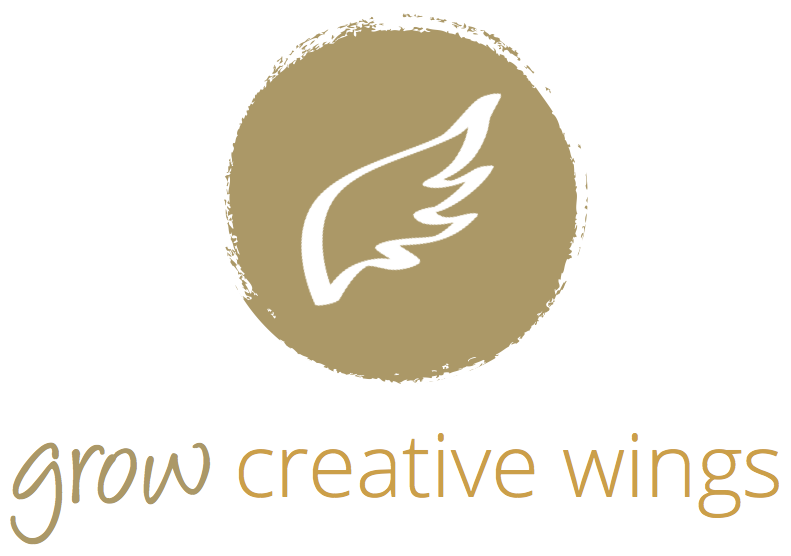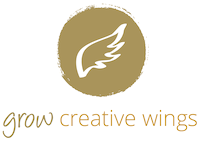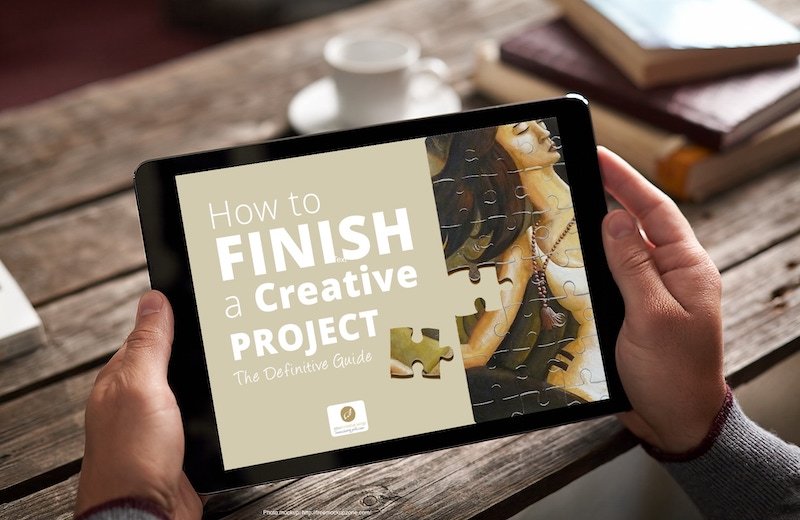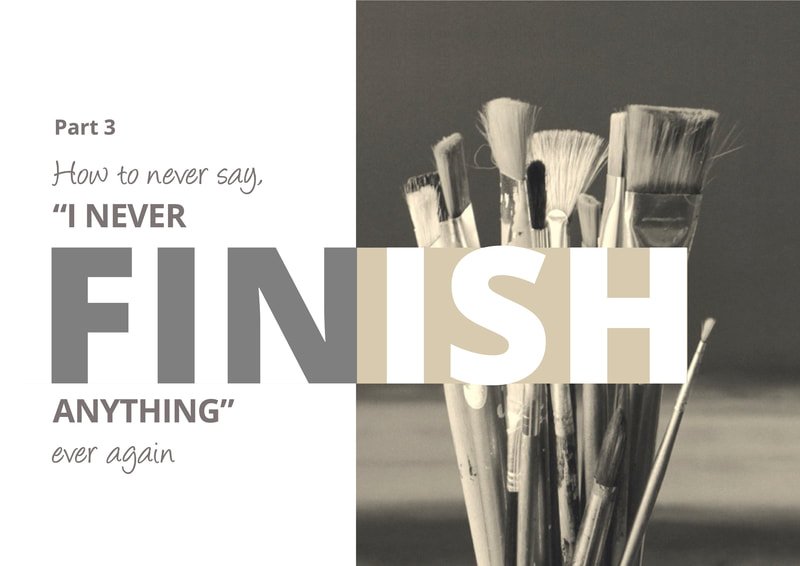This Is How to Overcome
Your Inability to Finish Projects
PART 2
In Part 1 we looked at why it’s so important to finish what you start.
But committing to finishing isn’t enough by itself. To overcome your inability to finish, you also need to prepare before you start. You do this by:
Understanding why you’re doing the project
Setting measurable outcomes which will tell you when you’re done.
Scoping the project: roughly planning its stages and offsetting its pitfalls.
Why do you want to do this project?
Maybe the answers seem self-evident: You’re passionate about the project, it’s going to boost your web traffic or your revenue stream, increase your ‘authority’ in your field, or bring you exposure. Or simply, someone is paying you and you need the cash.
These are all valid ‘why’s’!
But “Why?” is a question we rarely ask ourselves. Especially when we’re solopreneurs or doing a project as a side hustle or ‘passion project’.
And yet, just as in a team or company, you’d need to make a case for why dedicating time and resources to a project is valid, it’s helpful to ask yourself:
Why am I doing this?
What do I hope to get out of it?
What do I want to feel, be or have as a result?
Connect with your end vision
These questions aren’t always easy to answer.
But there is a way to think deeply about the meaning and purpose behind your project. And to get clear about both your external and subconscious motivations for doing it: Visualise what your life will look like after you complete the project.
Vision boards are an ideal way to do this.
(If you’ve never worked with a vision board before, you can find full instructions in my eBook Learn to Visualise.)
Make sure you love the process
One of the biggest reasons we fail to complete creative projects is doing them for the wrong reasons.
Sometimes we’re more motivated by the idea of having the outcomes connected to the project than we are by actually doing it.
We're not doing the project because we’re intrinsically motivated to make that thing. Instead we see it as a stepping stone to something else. That might be gallery representation, a book deal, our poems in an anthology, a prize or grant, or money or fame.
Now, there’s nothing wrong with a healthy dose of external motivation. It works as a form of accountability to get you in gear and keep you on track.
The problem comes when you’re only externally motivated. When your only interest in the project is an external reward.
Four reasons why purely external rewards don’t work
It turns out, relying purely on external rewards is a lousy way to keep your motivation to finish a project because:
1. You can’t guarantee you’ll achieve an external reward
You can hope that you will. Do your best to make it so. But the bestowing of these external rewards is ultimately in the hands of other people.
It's not within your remit to guarantee you'll achieve this external goal. So you're setting yourself up for failure before you even begin.
(This is a major way your Inner Critic derails you from your goals!)
2. Enjoying the process gets you through difficulties
If you don’t enjoy the process of making your thing, you won’t feel motivated to continue when you hit problems. Or the project takes longer than you expected. (And, as we’ll see later, almost every creative project takes longer than we expected!)
3. External rewards don’t fill our soul
How many times do you hear people say they feel empty after reaching a major ‘ambition’? That it hasn’t brought them what they imagined?
You end up feeling this way when you’re too focussed on an endpoint and not enjoying the journey.
I’m not saying you need to set aside dreams of achievement in order to be fulfilled on a daily basis. But you do need to make sure that the external reward is secondary to your love of the process - just in case you don’t achieve it. Otherwise you’re going to feel like you wasted your time.
4. You make inspired and original work when you’re in the flow
Creation happens in the here and now. You find your direction by dirtying your hands in the process. When you’re in the flow, you make work that comes from a deep, authentic part of yourself.
And the work resonates with your audience in a way that it never can when you try to make something you think they’ll like.
When you spend too much time thinking about where you want to be, and constantly worry about how other people will judge your work, you second-guess every decision you take. You forget to really dig in and savour the moment. And you take to heart every casual comment, even while the work is unfinished.
Instead of being inside the flow of your work, you stand outside it. This can lead to creative block.
So, to be sure of finishing a project, you need to be intrinsically motivated to work on it. In other words, it has to be enjoyable and challenging in and of itself.
Finding this useful but a lot to take in?
Get the eBook!
All three long-form articles combined in one 115 page book.
Beautifully laid out in an easy-to-read format.
Read offline at your leisure on any device!
Clarify what your project IS
Once you’ve selected a project that’s enjoyable and challenging, the next stage is to set specific goals.
These goals will give you:
A clear idea of what you’re expecting of yourself
A general map of where you’re heading
Tangible criteria for recognising when you’ve arrived.
What does DONE look like?
As we’ll see in Part 3 (COMING SOON), intuition is an important part of knowing when it’s the right moment to call done on a project. But even the best intuition needs help from tangible markers in the real world.
We need to know in advance how we'll recognise we're finished.
Or as David Allen of Getting Things Done fame would say, we need to know what ‘done’ looks like.
Not having a clear way to assess whether you've finished is one of the major reasons for not completing.
Yes, those illuminating dreams I mentioned in Part 1 massively motivated me to finish seven ‘Handless Maiden’ paintings. But THE strategy that helped me become a ‘serial finisher’ is setting measurable and clear outcomes for each project.
Set measurable - and achievable - outcomes for your project
Setting measurable objectives doesn’t mean writing in stone what the project will look like before you begin. But it does mean fixing specific aspects of the project.
Clear, measurable outcomes mean we prioritise completion over being happy with the result. If we’ve met our objectives, that's enough.
For example, I might decide to make my next artist book using primarily found materials. That's my objective.
As long as I make an artist’s book, and I do so using mostly found materials, I will have ‘succeeded’ and I can call ‘done’. I’m free to decide the look of the book, what structure I’ll use and so on. But I have a clear outcome that I can measure.
This approach takes away some of that terrible fear of our work not being "good enough”. (Believe me, that’s a fear that haunts every artist and creative person. No matter how accomplished, experienced or famous!)
It also stops what's know as 'function creep'. When we add extra parameters as we go along, moving the finish line forever further away.
Read in much more detail about how to define your project objectives.
Do Pre-Project Check & Prep
Once you’ve set your objectives you’ll probably feel fired up to leap straight in and get going. This is a moment of delicate balance!
You want to capitalise on this momentum, but some sensible preparation can save a ton of time and frustration later. And make it much more likely that you’ll finish the project.
I call this step ‘Pre-Project Check & Prep’.
This is the stage when you clarify in even more detail what your goal is, and what it’s going to take to achieve it. You assess your readiness for the trail and figure out where you have short-falls so you can address them before you set off.
The basic steps of Pre-Project Check & Prep are:
Recap your objectives
Research your project
Identify potential sticking points
Brainstorm solutions to your sticking points
Present your project proposal
Analyse your proposal
Run some tests
Post-testing analysis
While all this sounds very laborious, it’s actually a great warm up for the project itself. You’ve got your gear on and you’re doing a practice run!
Once you’ve finished this Pre-Project Check & Prep you should have a much clearer idea of what your project involves and where the sticking points might be. Forewarned is forearmed! This step is going to make you SO much more likely to finish your project!
Get detailed instructions on how to do a Pre-Project Prep & Check - and download the cheatsheet!
Now you’re ready to take the next crucial step - planning your project.
Plan Your Project
It’s amazing how quickly we can go from feeling a high of massive enthusiasm for our project to feeling totally overwhelmed.
The reason is that it’s all too easy to lose track of what we need to do and in what order.
Break down your project activities
We can probably all agree, can't we? To transform a big, amorphous project into doable actions, you need to break it down into steps.
A step-by-step breakdown of what needs to be done - and in what order is reassuring. If you work down the list, you'll inevitably arrive at the end. Whew!
How to sequence your actions
This advice makes total sense if you’ve done a similar project before. But what if you’ve never done anything like this project before? How do you even know what those steps might look like?
Whether or not you’ve done a similar project before, my post on planning creative projects will help you draw up an effective plan. And there’s a free project planning checklist to grab as well.
Take advantage of micro goals
Here's another win. When you break down the project into steps, you're automatically setting micro-goals!
To write this post, I started with a list of topics I wanted to include. Gradually, I moved them around into the most sensible order. Every time I felt overwhelmed by the enormity of the project, I set a timer and focussed on just one small section.
Each small section formed a micro-goal.
And as I saw the list of drafted sections grow larger than the empty ones, I knew I was plodding towards the finish line.
OVER-estimate how long your project will take
How many times do you hear someone say, “I got that novel written WAY quicker than I imagined I would.”? Or, “I just can’t believe how fast I designed that website!”?
This is due to what’s known as the ‘planning fallacy’. Proposed by Daniel Kahneman and Amos Tversky in 1979, it shows that when we make predictions about how much time we’ll need to complete a future task, we display an optimism bias.
In other words, we underestimate the time we’ll need.
So once you’ve written down all your steps, it’s a good idea to double your estimate for how long your project will take.
After all, if you finish before you’ll be able to have a nice bit of time off, won’t you?
Create a schedule for your creative project
If there’s one thing we know it’s that every day we have too many things fighting for our attention.
So it’s more than easy to let other tasks take precedence over your creative project. And, before you know it, you’ve got no spare time left in your calendar to work on it. Pretty soon you lose your motivation and you’re stuck with a half-finished project.
For this reason it’s imperative to schedule time to work on your project each day or each week. If you wait until you have ‘spare time’ you’ll never do it.
Show up!
When you show up (almost) every day, your creative work gets done.
Write even 200 words a day and you’ll gradually shape the first draft of a novel.
Write one new stanza every day and you can write an epic poem like the Greek classic The Iliad.
Paint one tiny square of paper and you can make a paper quilt.
That’s why I’m such a BIG fan of regular creative practice.
Establish a regular creative habit
When you carve out time to work on your project regularly, you’re setting up a creative habit.
Establishing a new creative habit - or any habit for that matter - is like training for a marathon. If you’ve never run before, you don’t go out on day one and try and log 3 miles!
Now I know that there’s no one-size-fits-all solution to anything. But when it comes to scheduling work on a creative project (especially a side project) there's ONE strategy that really works for me AND my clients.
You need to set up what I call a Minimum Regular Practice. This is the absolute MINIMUM amount of time you’re going to spend working on your project on a given day.
The idea is that you make this minimum so SMALL that you feel silly not doing it! This is how you get your butt in the chair. How long you actually spend there once you do that, is up to you.
The only way you can understand the power of this approach is to DO it. So I’ve created an email course to help you do exactly that.
(This is the exact same process I use with my clients to build a regular creative practice, at a fraction of the cost, so take advantage of it!)
Focus
It goes without saying that to get our project done, we need to focus. Establishing a regular creative habit is a huge part of this. It builds muscle memory that tells us,
“It’s 6pm, I’m sitting in my red chair and it’s time to work on my novel.”
Not only do we get rid of decision fatigue, we tap into a brain pattern primed to focus on the specific task in front of us.
Eliminate Distractions
But, with the best will in the world, there are going to be days when your attention wanders all over the place. So it’s worthwhile experimenting with tools and tactics to see which work best for you to increase focus:
Listen to music, podcasts or white noise
Turn off phone notifications
Use a writing app such as Scrivener with a composition mode that blacks out everything but the writing
Set a Pomodoro timer
Do yoga, meditate or go for a walk before you start
Buddy up with a friend (See accountability section below)
Your favourite approach won't be the same as mine. Try out some different ones and find out what works for you.
Set a deadline…or not?
Setting a deadline can be one of the best ways to ensure you finish a creative project. It’s a signal to yourself that you’re committing to the project, but you don’t plan to work on it forever!
I have to admit I’m not the world's best at completing self-directed deadlines in my artwork. (Although I can do it for, say, weekly blogposts or quarterly newsletters.)
Partly it’s because I’m never sure how long it will take me to get my ideas in place.
Sometimes they comes together quickly. Other times I circle around and around. I know something still isn’t clicking but I'm not sure what. A piece of the puzzle is missing and I need to find it before I can carry on.
I’ve learned to be patient with myself in these times. I know it’s part of my process and it leads to better work in the end. But it does make setting deadlines difficult.
And I do know that an externally-imposed deadline - such as an upcoming show - pressurises me into making this process happen quicker.
So, to motivate myself to finish by a certain time, I tie my deadlines to events such as public holidays. Or travel plans. It satisfies my internal need for natural order better than an arbitrary date.
Get accountability
The thing about deadlines is they function as a form of accountability.
(That’s why I find it easier to meet my blogging and newsletter deadlines.)
So if you don’t have the pressure of an externally-imposed date to work towards, look for other ways to get accountability. Fortunately, these days there all sorts of ingenious ways to get that.
1. Stickk.com
Stickk is a website where you announce your goal in a ‘Commitment Contract’. You can optionally leverage the power of putting money on the line to make sure you stick to it. Stickk has series of tools to record and track your progress. And you can invite friends and family members to cheer you on.
2. Focusmate
Focusmate is a ‘virtual co-working’ website. You choose a time to work and Focusmate pairs you with an accountability partner for a live, virtual co-working session.
3. Creative habit coaching
Creative habit coaching helps you build and maintain creative habits. It gives you accountability, support and daily hand-holding. And of course you get the added benefit of the coach’s experience - both personal and with other clients.
Why focussing on one thing might not be the best way to get your project done
Contrary to internet lore, focussing solely one project might not be the best approach to peak productivity.
I found this out a couple of years back when I set aside a month to focus on redesigning my website. I got it done. But the ratio between the hours I spent and my productivity wasn't as high as I imagined. And over the course of the month my productivity dropped lower and lower!
So what was going wrong?
We’re told we should avoid multi-tasking. And too much task-switching - due to the amount of time it takes to get refocussed.
Yes, my productivity was greater when I blocked in regular sessions to focus on my project.
But only when I also left space around these sessions for:
Less mentally-demanding tasks, and
Subconscious problem-solving
I’m relieved to find I’m not alone! Journalist, radio presenter and author Tim Harford, makes a strong case for a dance between one project and another. A dance in which - rather than mindless task-switching - we cross-pollinate ideas. Or incubate one project, whilst getting on with another important piece of work.
He is a man who thinks a lot about creative productivity. Two of his favourite books are:
The Creative Habit:
Learn it and Use it for Life
Twyla Tharp
Tim Harford has also written several books on the topic of creative productivity himself:
Take a listen to what Tim has to say about ‘slow motion multitasking’ and see what you think.
A clear roadmap to the finish line
So, although it’s easy to get carried away with our enthusiasm for starting a project, the likelihood that we’ll actually finish it is HUGELY influenced by the preparation we do before we start.
We need to:
Understand why we’re doing the project.
Set measurable outcomes to tell us when we’re done.
Get clear on the various stages of the project and ready for the most likely problems.
Rather than being a painful process that stops us ‘getting on’ with our project, this is actually a painless lead-in to getting the project under way.
By the time we’re ready to work on the project for real, we have a clear roadmap with small, measurable landmarks by which to measure our progress.
PART 3: How to Never Say, "I Never Finish Anything" Ever Again
How do you:
Keep going towards the finish line once the initial excitement for your project wanes?
Finally get the project out of the door (Ship)?
Get extra value from finishing your project and make sure you don’t fall prey to anti-climax?
We'll be looking at the answers to all these in the final part of this series.
Read Part 3
OR

















